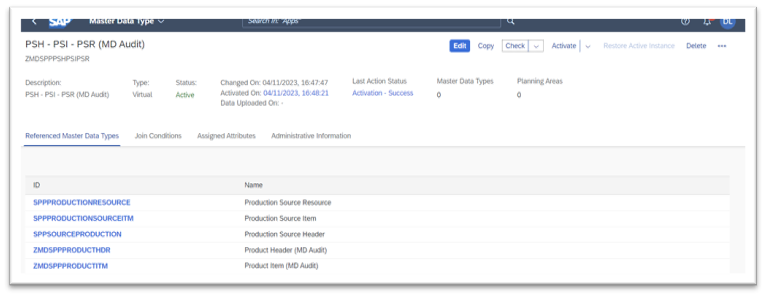Supply chain is not a virtual thing, Daniel! It is concrete, made of processes, master data, transactional data, combined with calculation engines!
Yes, yes, and yes! You are perfectly right; it is all this and even more. Some time ago, I wrote something about the very good rule-based master data maintenance recently published by SAP. Today, I will comment on another feature of SAP IBP that has been around for quite some time, however not much used, the “Virtual Master Data Types”.
Don’t go, don’t give up now!
Although this post may be a little technical, it reveals a great option in SAP Integrated Business Planning (SAP IBP) to compensate for the data model proposed by SAP, very scattered, with which each and every IBP user struggles. Have you ever tried to reconcile the Production Data Structure in IBP Time Series, made of PSH (Production Source Header), combined with PSI for the BOM, and PSR for the routing? Simply a nightmare. There is no output in the standard to display that kind of master data simply as a list, except the Supply Network Fiori application, which is not what we want.
In short, the output result of what I am discussing here is for instance:
- One single list showing all production sources (PSH), all components (PSI), and all resources (PSR), with the ability to link a selection of that list to material type, location region, planner etc.
- Another example: a transportation lane displaying location from, location to, the product being transported, filter by material type, or by market segment…
With these two examples, I am showing you that from the scattered data model used in IBP, made up of many individual tables (MDT in fact), you can easily create consistent displays and lists that are seriously lacking in the IBP SAP Sample planning area.
How to proceed?
Simply create an additional MDT “virtual” in your IBP modeling. Even better, with the recent and very good “Manage Master Data” application, you don’t need to link up this complementary MDT with your many planning areas. You only need to create and activate it, and this is it. You can browse your master data in Fiori, not in a Master Data Excel workbook. The second option is only possible if you introduce these MDT in your planning areas. No issue, from the Fiori apps there is also an export feature to Excel.
What are these Virtual MDT? In fact, this a feature quite similar to a SQL Inner Join feature, which allows you to link several individual MDT, being simple, compound or reference, and define what relates them. For instance, in PSH you wish to have product information as well, not only the product ID. To do so you create a new MDT of the type “virtual”, select the PSH and Product MDT and define Product ID from PSH links with the Product ID in Product MDT. Then you also add in this virtual MDT any other fields from your source MDT that make sense to use like material type, category, etc. You are not limited to only two source MDT.
See the below example, where I have created a Virtual MTD that links PSH, PSI, PSR, Product Header, Product Item, Location, Resource and Resource-Location.
MDT are connected with Join Conditions as you can see here:
Finally, because I only want some of the source fields (attributes), I defined in this virtual MDT only those fields that make sense. See below.
This is an extended example, which took me one hour to set. I also created two reference MDT of the initial Product MDT, here Product Header and Product Item to differentiate the product from the PSH as the output, from products as components from the PSI.
Finally, this setting does not consume any memory. Reference MDT do not consume memory, neither do Virtual MDT.
With this concept it is easy for us to analyze master data, crossing data between MDT and detecting either inconsistencies or useless ones.
Enjoy IBP!




